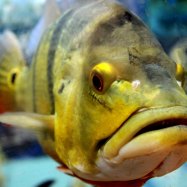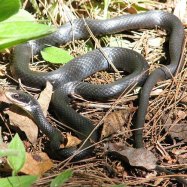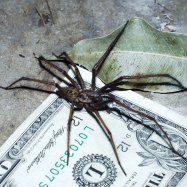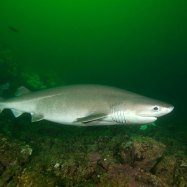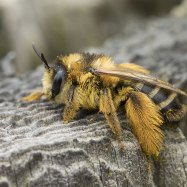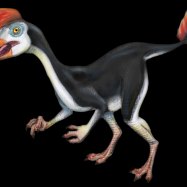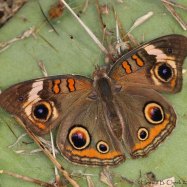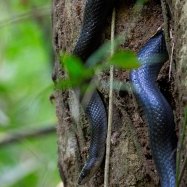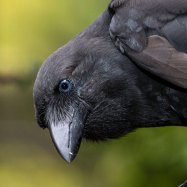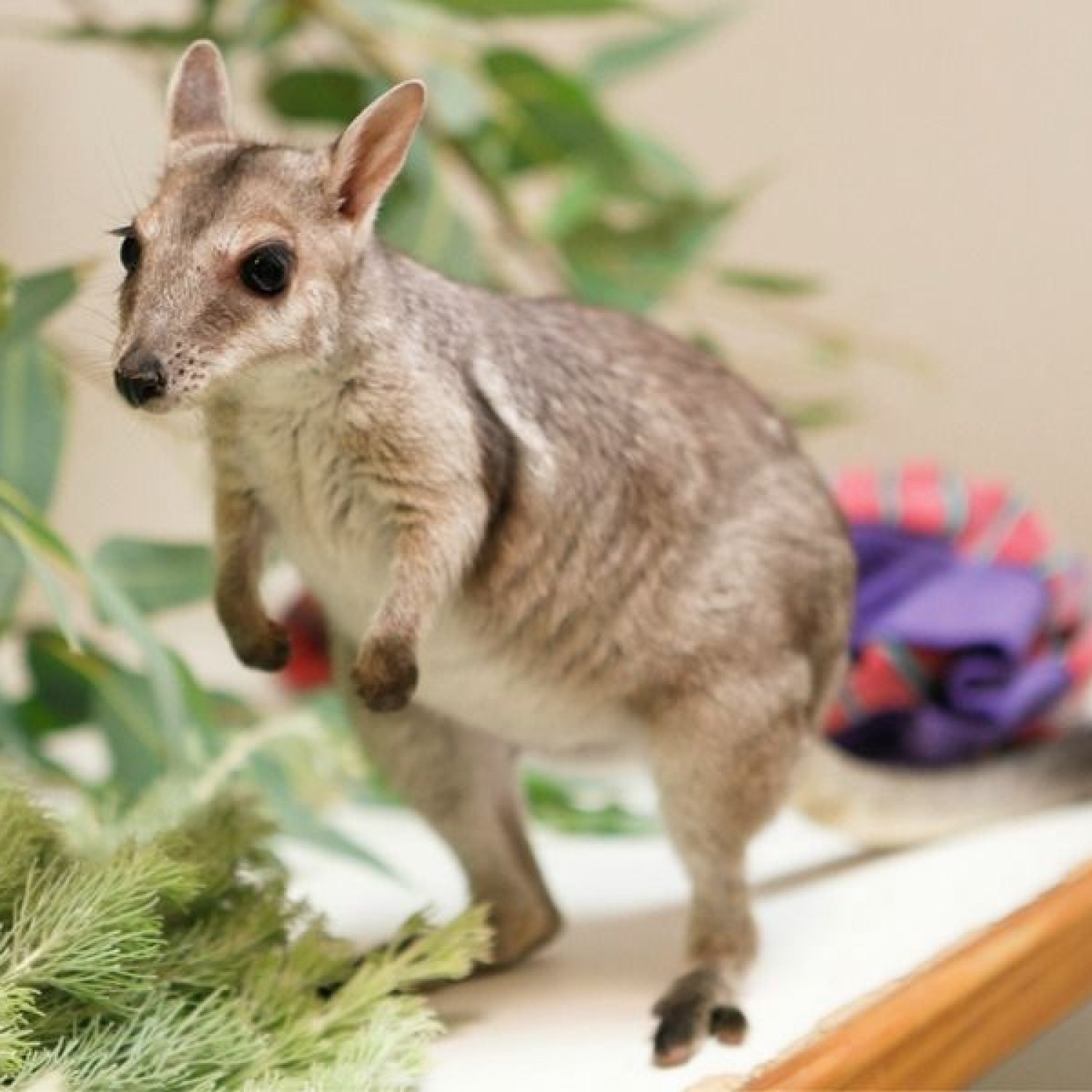
Nabarlek
35 – 50 cm
The Nabarlek, a small and slender member of the Macropodidae family, can be found in Kakadu National Park. With a length of 35-50 cm, they are the perfect example of how tiny creatures can thrive in the wild. These adorable animals are also known as the pygmy rock-wallaby, making them even more endearing to visitors. So, if you're planning a trip to Kakadu, keep an eye out for these fascinating creatures!
Animal Details Summary:
Common Name: Nabarlek
Kingdom: Animalia
Habitat: Rocky outcrops, cliffs, and escarpments
The Charming Miniature Kangaroo – The Nabarlek
The Australian outback is home to some of the most unique and fascinating creatures on our planet, and the Nabarlek is one of them. Also known as the "Pygmy Rock Wallaby," this tiny kangaroo has captured the hearts of many with its adorable looks and remarkable adaptations to survive in its harsh habitat. In this article, we will explore the wonders of the Nabarlek and learn more about this captivating animal.Meet the Nabarlek – A Miniature Kangaroo
Scientifically known as Petrogale concinna, the Nabarlek is a species of small macropods that belong to the family Macropodidae, which also includes other kangaroos and wallabies Nabarlek. These tiny marsupials are endemic to Northern Australia and are only found in a limited area, including the Kakadu National Park. The name "Nabarlek" is derived from the word "Nabar-ralee," which means "small kangaroo" in the Nunggubuyu language of the Indigenous Australians.A Unique Member of the Animal Kingdom
Like all mammals, the Nabarlek belongs to the kingdom Animalia, phylum Chordata, and class Mammalia. However, they are further classified in the order Diprotodontia, meaning "two front teeth." This order includes animals that have a unique arrangement of their front teeth, with the second incisors being larger than the first. This adaptation helps them to grind and chew their food more efficiently.The Habitat of the Nabarlek
The Nabarlek is a master of survival in Australia's rugged terrain, where it has adapted to live in rocky outcrops, cliffs, and escarpments. These areas provide excellent shelter and protection from predators, as well as natural caves and crevices where they can hide and sleep. They are known to be agile climbers, using their sharp claws and long tails to navigate the rocky terrain Nilgai.A Herbivorous Diet
As with most kangaroos, the Nabarlek is a herbivore and relies on a plant-based diet for its sustenance. They have a diverse diet and feed on a variety of plants, such as grasses, leaves, fruits, and herbs. Their unique digestive system allows them to break down tough and fibrous plants, extracting as much nutrients as possible to meet their energy requirements.A Limited Geographical Distribution
The Nabarlek has a restricted range and is only found in Northern Australia, particularly in the Northern Territory and Western Australia. Within this region, they prefer to inhabit areas with rocky terrain and abundant food sources. Their limited distribution is a result of their specific adaptations to their habitat, making it challenging for them to thrive in different environments.Kakadu National Park – A Mecca for Nabarleks
One of the best places to observe Nabarleks in their natural habitat is the famous Kakadu National Park. This 20,000 square kilometer park is home to a diverse array of wildlife, including the iconic Australian megafauna – the kangaroo. The Nabarlek is just one of the many species that call this vast park home, and visitors can often spot them while exploring the park's rugged terrain.The Unique Coloration of the Nabarlek
The Nabarlek's distinct coloration is one of its most striking features. They have reddish-brown fur with patches of white on their neck, shoulders, and belly. This coloration acts as a natural camouflage, helping them to blend in with the rocky terrain. The white patches also reflect sunlight, keeping them cooler in the hot Australian sun.A Small and Slender Body Shape
In contrast to other kangaroo species, the Nabarlek has a small and slender body shape. They have an average length of 35 – 50 cm and stand at about 25 cm tall. Their body weight ranges from 0.5 – 1.5 kg, making them one of the smallest macropods in Australia. Their petite size allows them to move swiftly and agilely through rocky areas, avoiding potential predators.The Life of a Nabarlek
The Nabarlek is a solitary animal, and they are most active during the cooler hours of the day, especially at dawn and dusk. During the hotter parts of the day, they tend to rest in shaded areas, such as caves or crevices, to avoid overheating. They are primarily nocturnal animals, meaning they are most active at night, although they may come out during the day to forage for food.The Reproduction of the Nabarlek
The reproductive cycle of the Nabarlek is closely linked to the wet season in Northern Australia, which runs from November to April. During this time, males will establish territories to attract females for mating. Females give birth to a single offspring, which they carry in their pouch for about six months. After this time, the young Nabarlek will begin to venture out of the pouch but will continue to suckle milk until they are fully weaned at around eight months.Threats to the Nabarlek
The Nabarlek is classified as "Least Concern" on the IUCN Red List, which means they are not currently facing any significant threats to their survival. However, like many species in Australia, they face potential dangers, such as habitat loss and predation from introduced species, such as foxes and feral cats. Climate change and increasing droughts may also impact their food sources and water supply, affecting their population numbers.Conservation Efforts for the Nabarlek
The Nabarlek may not be facing immediate extinction, but it is still crucial to protect and conserve this unique species. Kakadu National Park, as well as other protected areas in Northern Australia, play a vital role in safeguarding the Nabarlek's habitat. Researchers also continue to study and monitor their population numbers and behavior to ensure their long-term survival.In Conclusion
The Nabarlek may be small in size, but it is truly a remarkable animal that has thrived in Australia's rugged outback. From its unique adaptations to its impressive coloration, this tiny kangaroo has captured the hearts of many and continues to fascinate scientists and nature enthusiasts alike. The future of the Nabarlek may be uncertain, but with continued efforts towards conservation and protection, we can ensure that this charming miniature kangaroo remains a part of our world for generations to come.

Nabarlek
Animal Details Nabarlek - Scientific Name: Petrogale concinna
- Category: Animals N
- Scientific Name: Petrogale concinna
- Common Name: Nabarlek
- Kingdom: Animalia
- Phylum: Chordata
- Class: Mammalia
- Order: Diprotodontia
- Family: Macropodidae
- Habitat: Rocky outcrops, cliffs, and escarpments
- Feeding Method: Herbivorous
- Geographical Distribution: Northern Australia
- Country of Origin: Australia
- Location: Kakadu National Park
- Animal Coloration: Reddish-brown fur with patches of white
- Body Shape: Small and slender
- Length: 35 – 50 cm
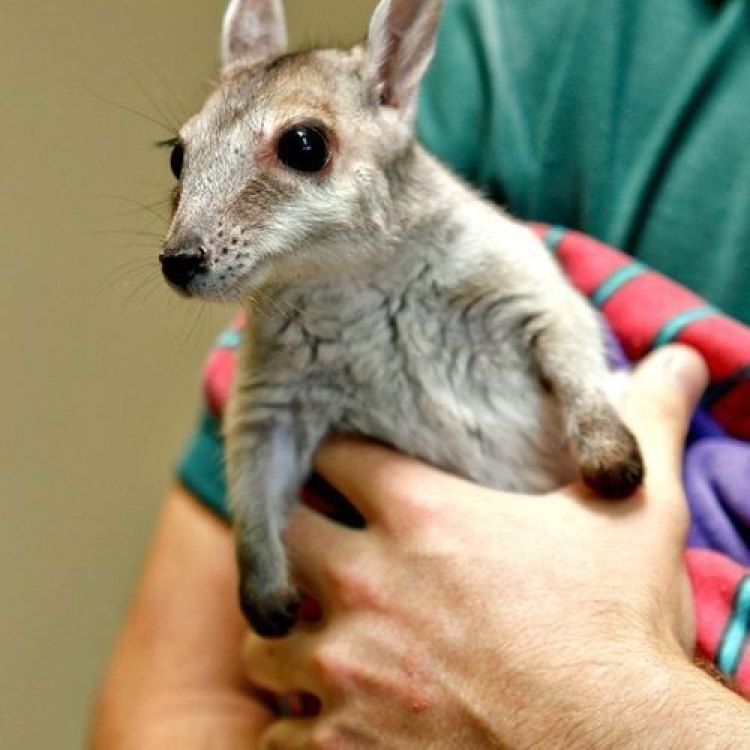
Nabarlek
- Adult Size: Small
- Average Lifespan: 7 – 8 years
- Reproduction: Marsupial
- Reproductive Behavior: Polygynous mating system
- Sound or Call: High-pitched whistle
- Migration Pattern: Non-migratory
- Social Groups: Solitary or small groups
- Behavior: Nocturnal and arboreal
- Threats: Habitat loss, predation, and bushfires
- Conservation Status: Near Threatened
- Impact on Ecosystem: Pollinates plants
- Human Use: Cultural significance
- Distinctive Features: Large ears and long tail
- Interesting Facts: Smallest rock-wallaby species
- Predator: Dingoes, eagles, and snakes
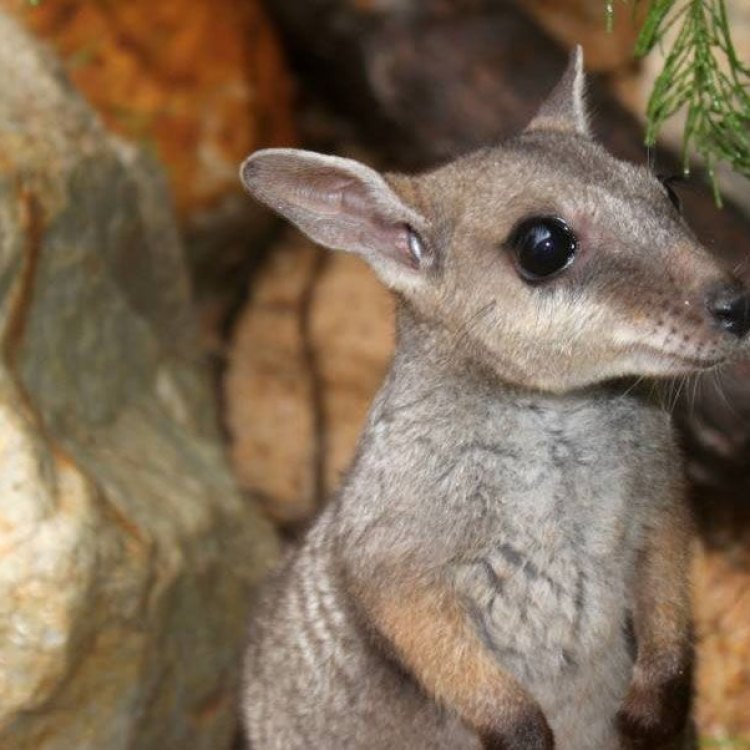
Petrogale concinna
The Fascinating Life of the Nabarlek: Australia's Small but Mighty Marsupial
In the vast and diverse continent of Australia, one can find a plethora of unique and fascinating wildlife, including the elusive Nabarlek. This small but mighty marsupial, also known as the rock-wallaby, stands out among its larger and more well-known counterparts. From its distinctive features and behavior to its vital role in the ecosystem, the Nabarlek is a creature worth learning about.Here we will explore the intriguing life of the Nabarlek, from its size and lifespan to its reproduction and impact on the environment PeaceOfAnimals.Com.
The Perfect Size and Average Lifespan
Don't let its size fool you, the Nabarlek may be small, but it is perfectly adapted to its environment. With an adult size of only 35-45 centimeters and weighing between 0.7-1.1 kilograms, this petite marsupial is one of the smallest in its family, the macropods. Its size allows it to move with agility and grace in its rocky habitat, making it difficult for predators to catch.The average lifespan of a Nabarlek is 7-8 years, a relatively short time compared to other marsupials. However, this species' lifespan is heavily influenced by factors such as habitat and food availability, as well as threats from predators and humans.
The Unique Reproductive Behavior
Like all other marsupials, the Nabarlek has a unique form of reproduction. Females have a pouch in which their young, known as joeys, develop after birth Northern Jacana. However, what sets the Nabarlek apart is its polygynous mating system.In this system, a male has a hierarchical social structure and mates with multiple females. The dominant male has exclusive access to a female, while subordinates may mate with females when the dominant male is occupied. This mating system ensures the survival of the species by allowing for a diverse gene pool.
The High-Pitched Whistle of the Nabarlek
While most marsupials are known to make vocalizations, the Nabarlek has a unique sound that sets it apart from others. This small marsupial produces a high-pitched whistle, usually as a warning signal to alert other group members of danger. It is believed that this sound helps group members locate each other at night, as they are primarily nocturnal.A Non-Migratory Lifestyle
Unlike some other animal species in Australia, the Nabarlek is a non-migratory creature. It has adapted to living in its rocky habitat and does not need to migrate for food or climate purposes. This trait makes the Nabarlek a truly unique and self-sufficient animal.Solitary or Small Group Dynamics
The Nabarlek's social behavior varies, depending on factors such as food availability and population density. They can be found either living in pairs or small groups, with a dominant male and several females. However, during food scarcity, they may become solitary, and the dominance hierarchy becomes less relevant.Nocturnal and Arboreal Habits
The Nabarlek is a master of camouflage, blending in perfectly with its rocky environment. This makes it difficult for predators to spot them during the day, which is why they choose to be active at night. This nocturnal behavior allows them to forage for food and interact with their group members without risking being seen by predators.As an arboreal species, the Nabarlek is also capable of climbing and navigating the rocky terrain with ease. They are often seen perched on rocks or in crevices during the day, giving them a better vantage point to spot potential dangers.
Threatened by Habitat Loss, Predators, and Bushfires
The Nabarlek's habitat is under constant threat from human activities such as mining, agriculture, and urbanization. This loss of habitat puts the species at risk of extinction, along with other threats such as predation and bushfires.Predators, including dingoes, eagles, and snakes, pose a significant threat to the Nabarlek's survival. As their population decreases, they become more vulnerable, making it essential to protect their habitats from further destruction.
A Near Threatened Conservation Status
Due to the various threats faced by the Nabarlek population, the species is currently listed as "Near Threatened" on the IUCN Red List. This classification means that it is at risk of becoming vulnerable to extinction in the near future if necessary measures are not taken.Conservation efforts such as habitat protection and predator control have shown some positive results in increasing the Nabarlek population. However, continued conservation efforts are vital to ensure their survival for generations to come.
A Key Pollinator in the Ecosystem
As an integral part of Australia's unique ecosystem, the Nabarlek has a crucial role in pollinating plants. As it moves from one area to another in search of food, it transfers pollen from one plant to another, allowing for plant reproduction.Without the Nabarlek, many plants would not be able to thrive and reproduce, leading to a domino effect on other species that rely on those plants for food and shelter.
Cultural Significance and Human Use
The Nabarlek holds cultural significance for indigenous Aboriginal communities, who view it as a sacred animal. Its presence is often associated with good luck and a connection to the spiritual world. Additionally, they are used in traditional ceremonies and ancestral stories as a symbol of strength and resilience.Today, the Nabarlek is also used in eco-tourism, where visitors can observe and learn about this unique and fascinating creature in its natural habitat. These tours provide opportunities for education and awareness about the importance of protecting and preserving the Nabarlek and its habitat.
Distinctive Features and Other Interesting Facts
The Nabarlek has several distinctive features that make it stand out among other marsupials. Its most noticeable features are its large ears and long tail, which it uses for balance and agility as it navigates its rocky habitat. Its fur is a mix of grey, brown, and red tones, allowing it to blend in seamlessly with its surroundings.Other interesting facts about the Nabarlek include:
- It is the smallest rock-wallaby species.
- It was first described in the 1840s by European explorers.
- Its scientific name, Petrogale concinna, translates to "pretty rock-dweller."
- The Nabarlek population is declining due to habitat loss and predation.
- It mostly feeds on grass, seeds, and fruits found in its rocky habitat.
In Conclusion
The Nabarlek may be small, but it has a mighty impact on Australia's diverse ecosystem. Its unique features, behavior, and role in the environment make it a fascinating creature worth learning about and protecting for future generations. As threats to its population continue to increase, it is vital to recognize the importance of preserving and conserving this near-threatened species. Let us do our part in ensuring that the Nabarlek remains a thriving and integral part of the Australian outback for years to come.
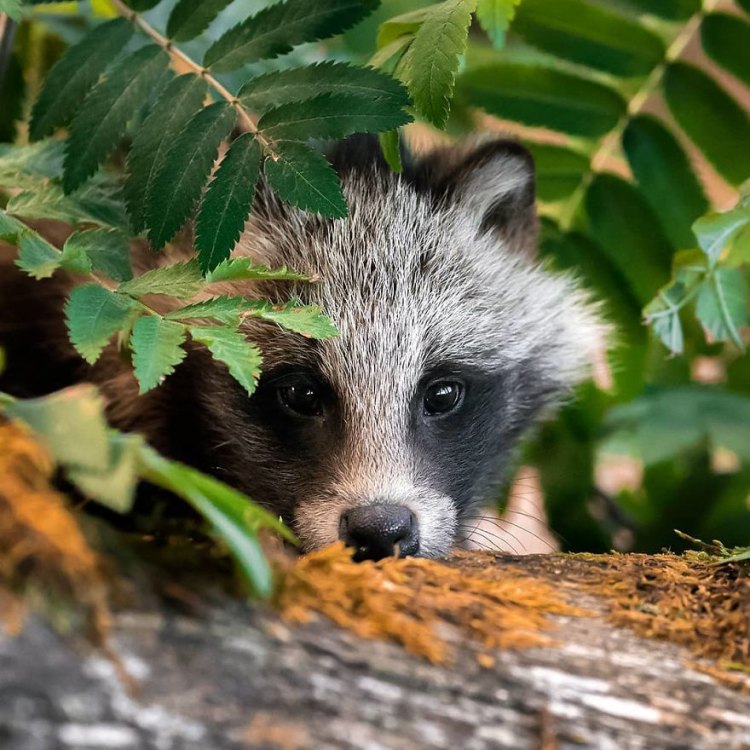
The Charming Miniature Kangaroo – The Nabarlek
Disclaimer: The content provided is for informational purposes only. We cannot guarantee the accuracy of the information on this page 100%. All information provided here may change without prior notice.


